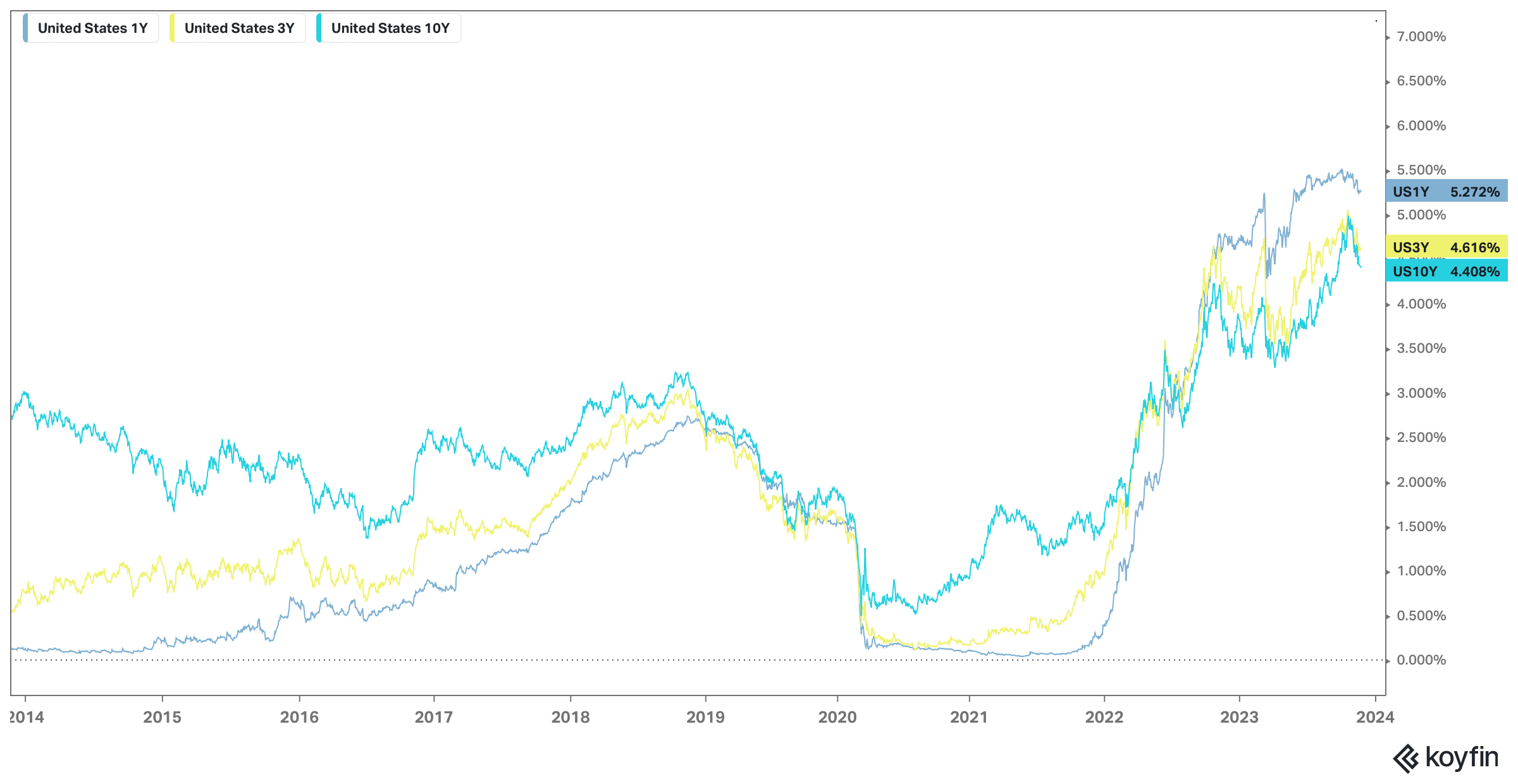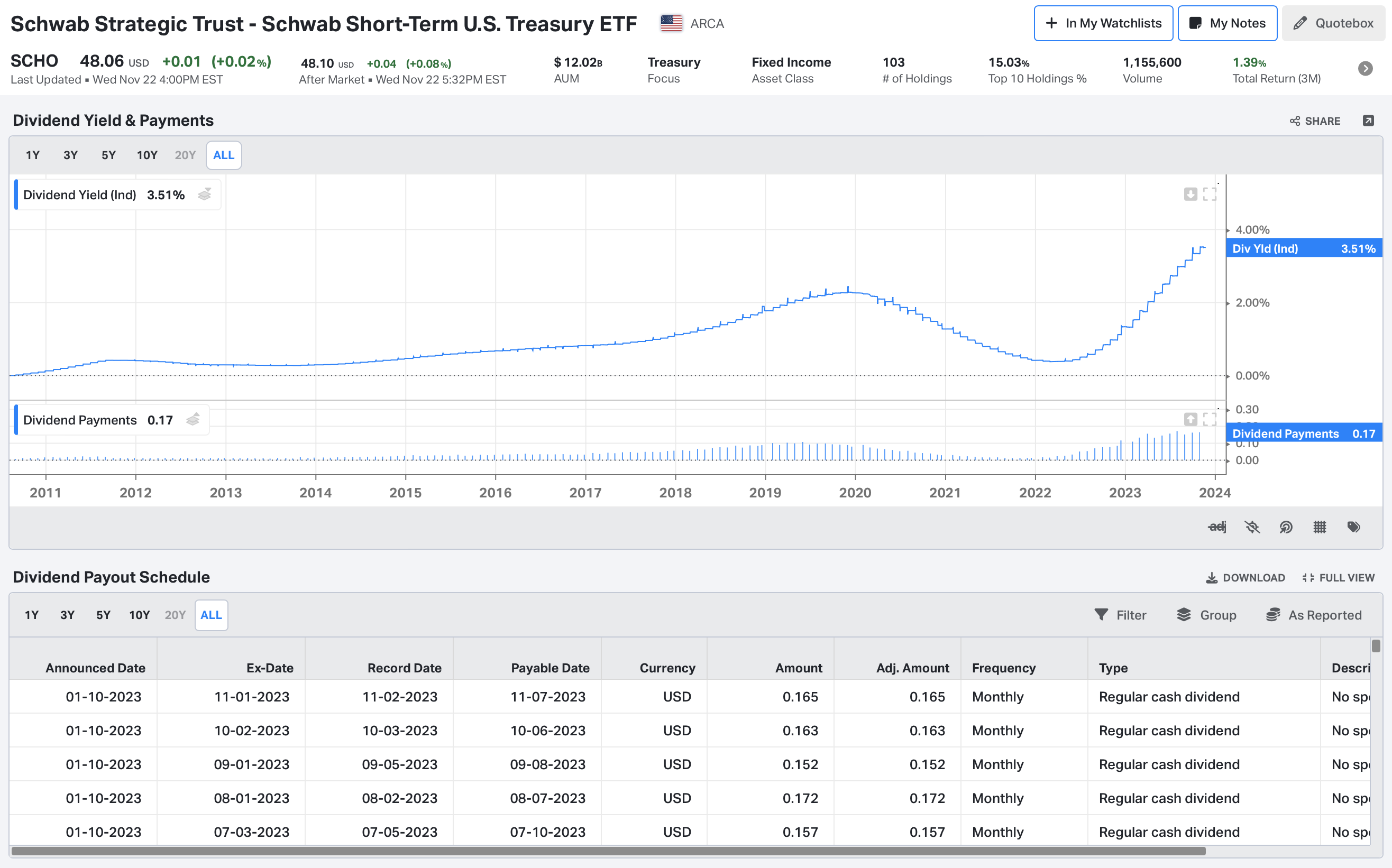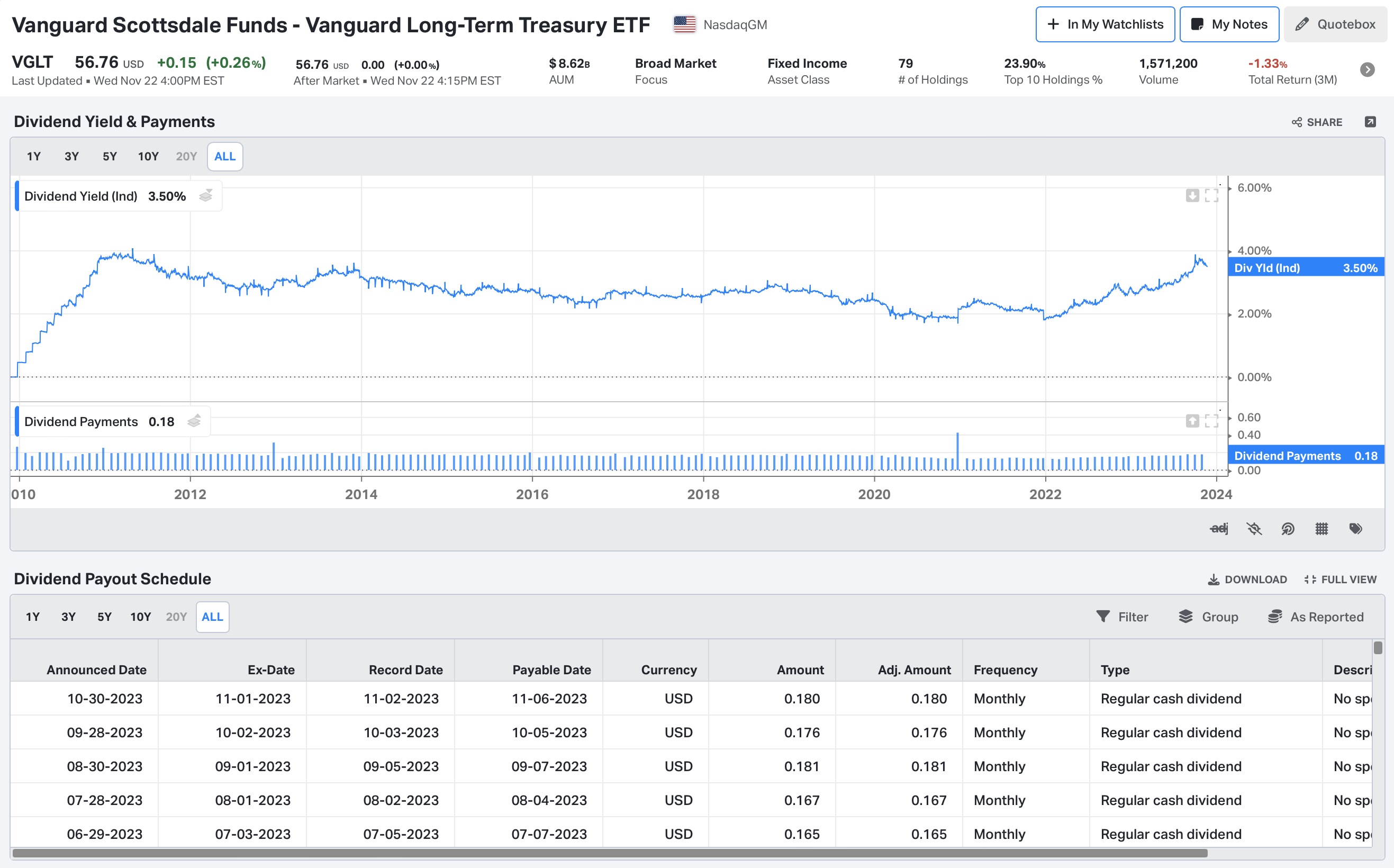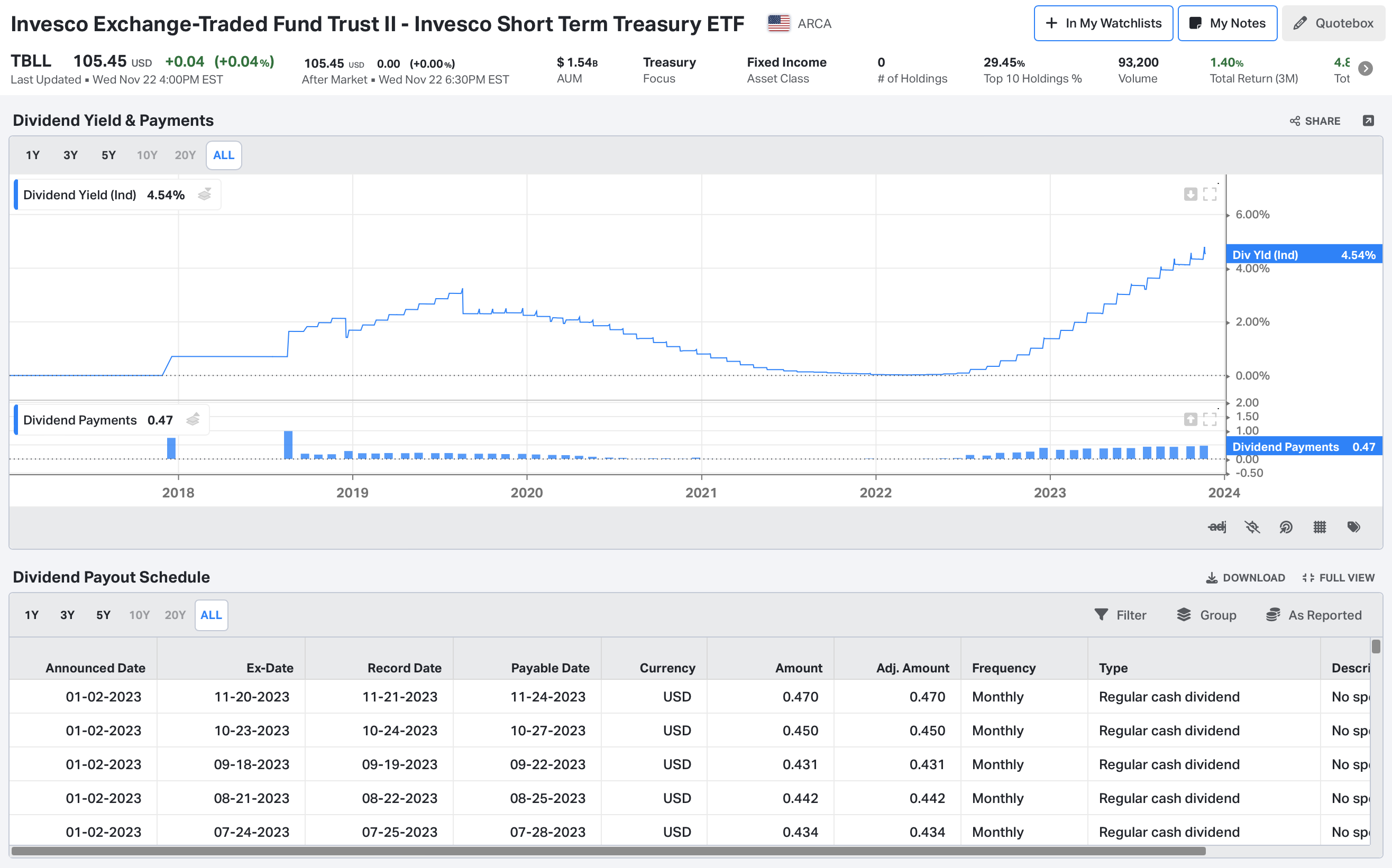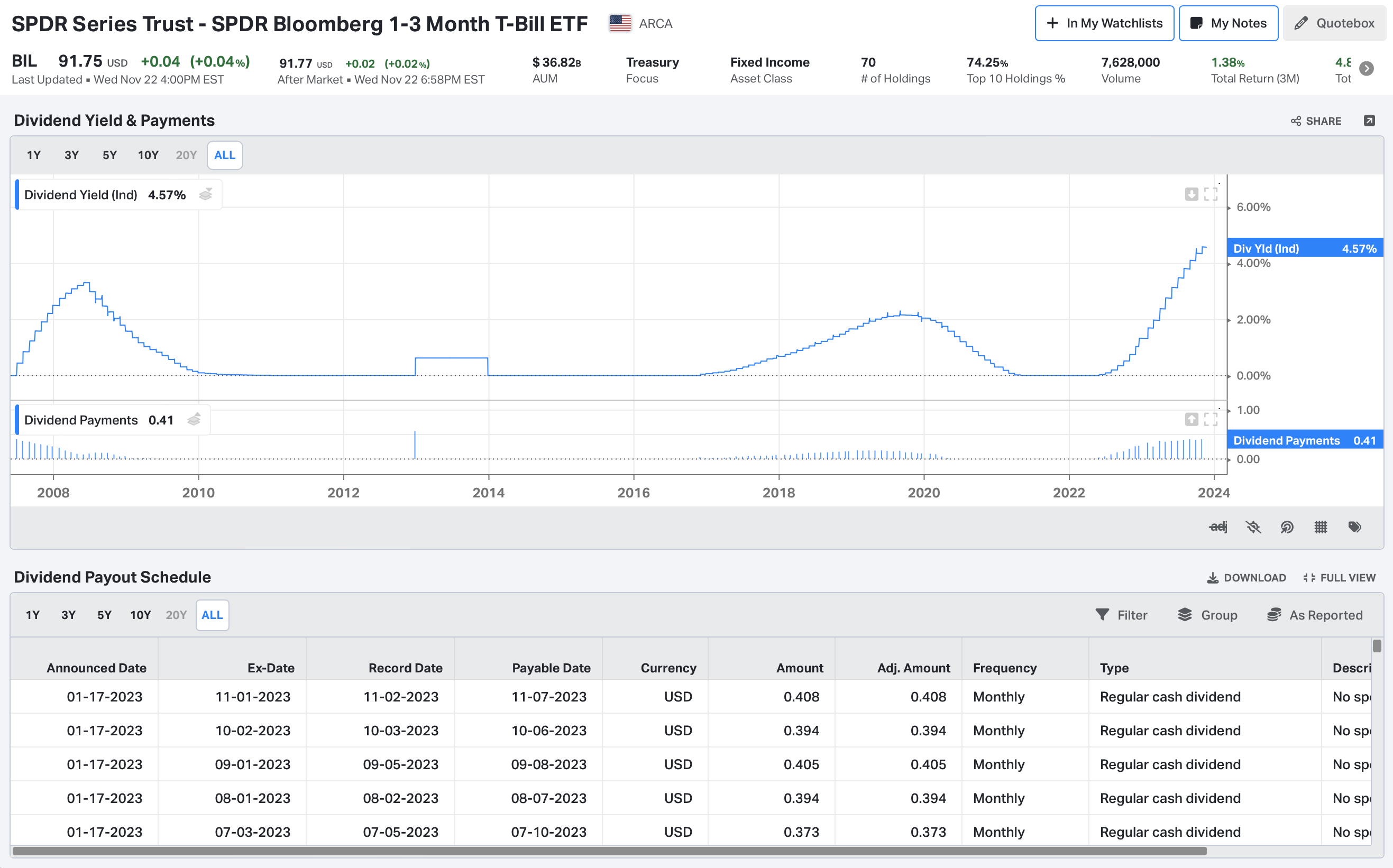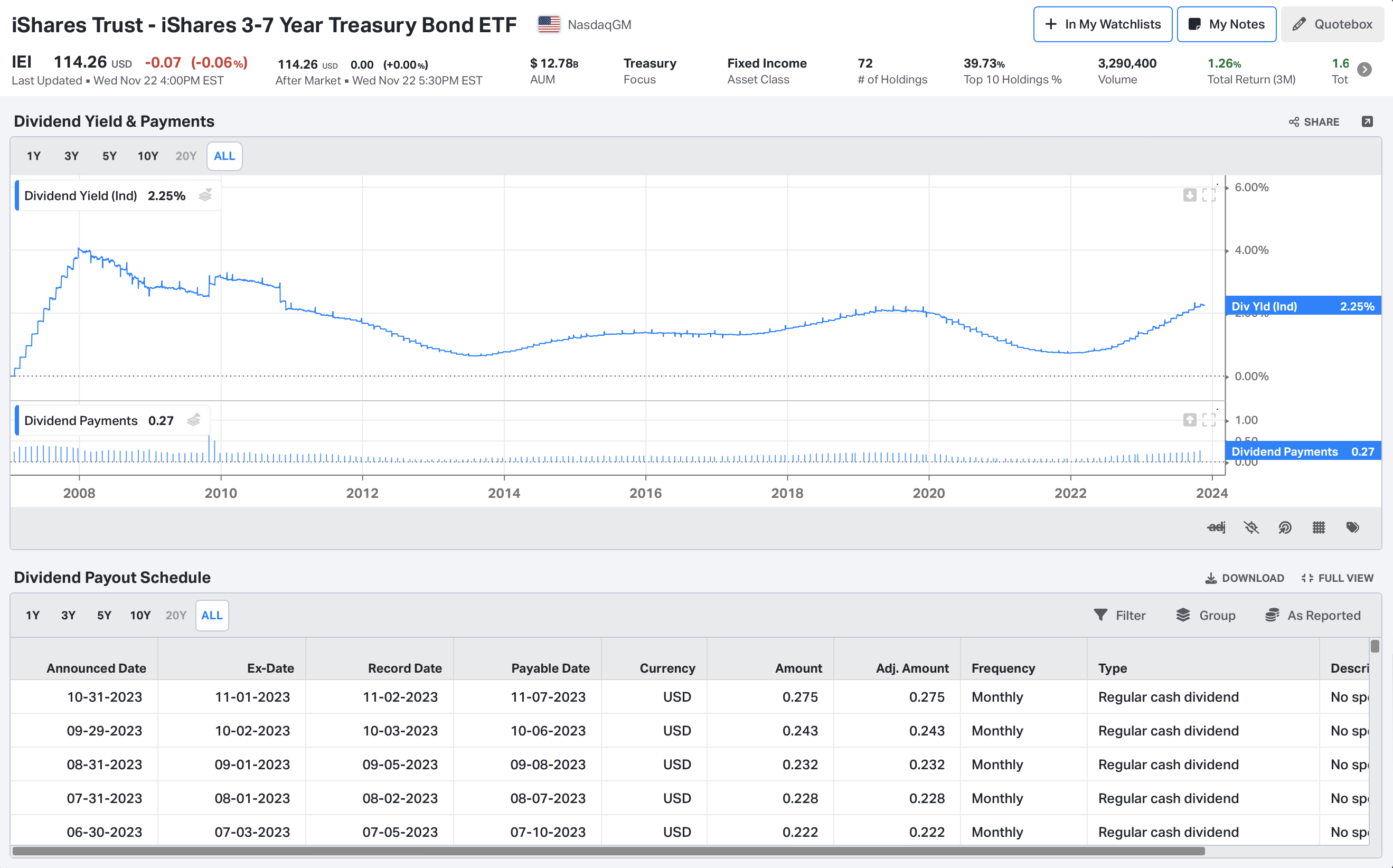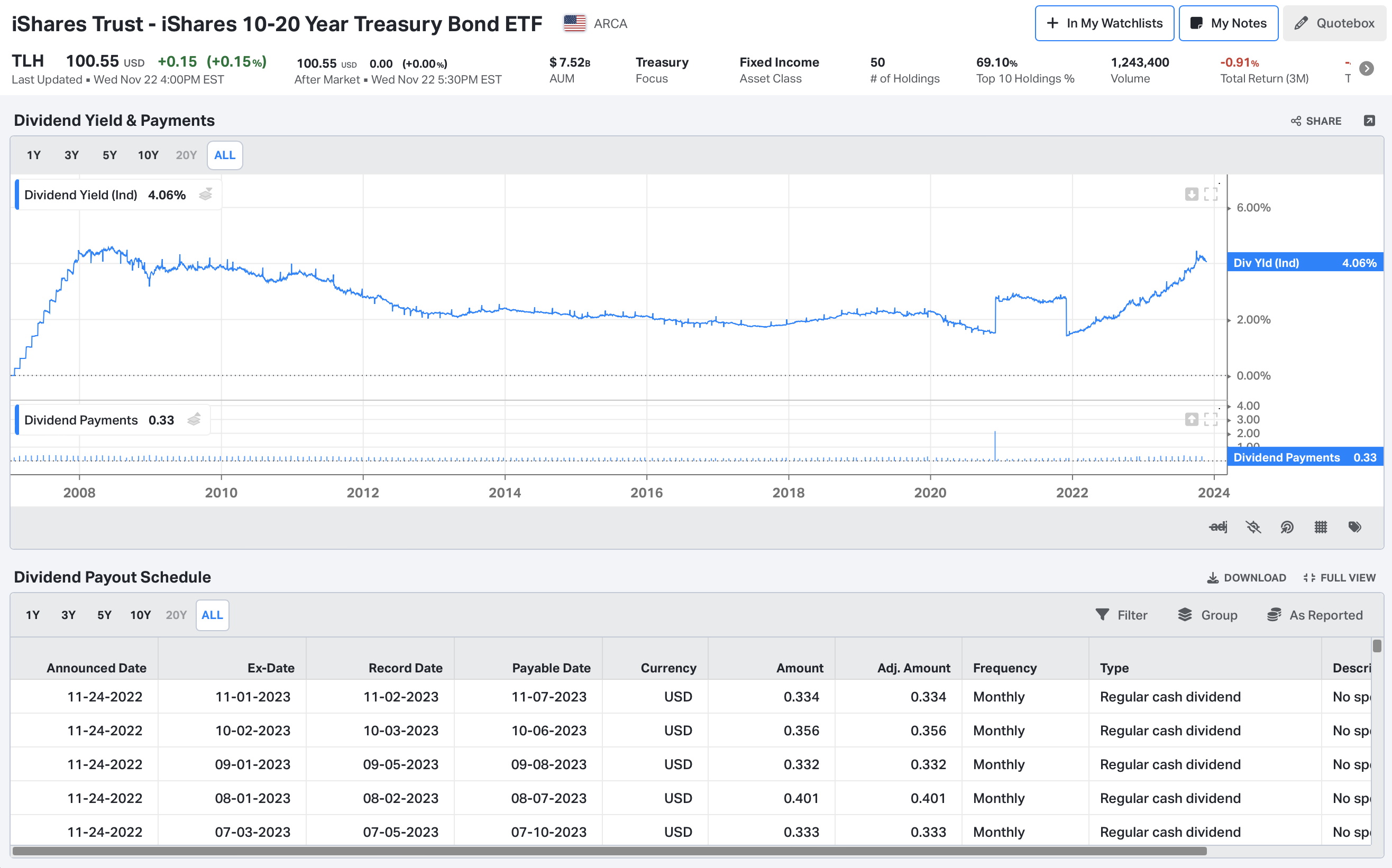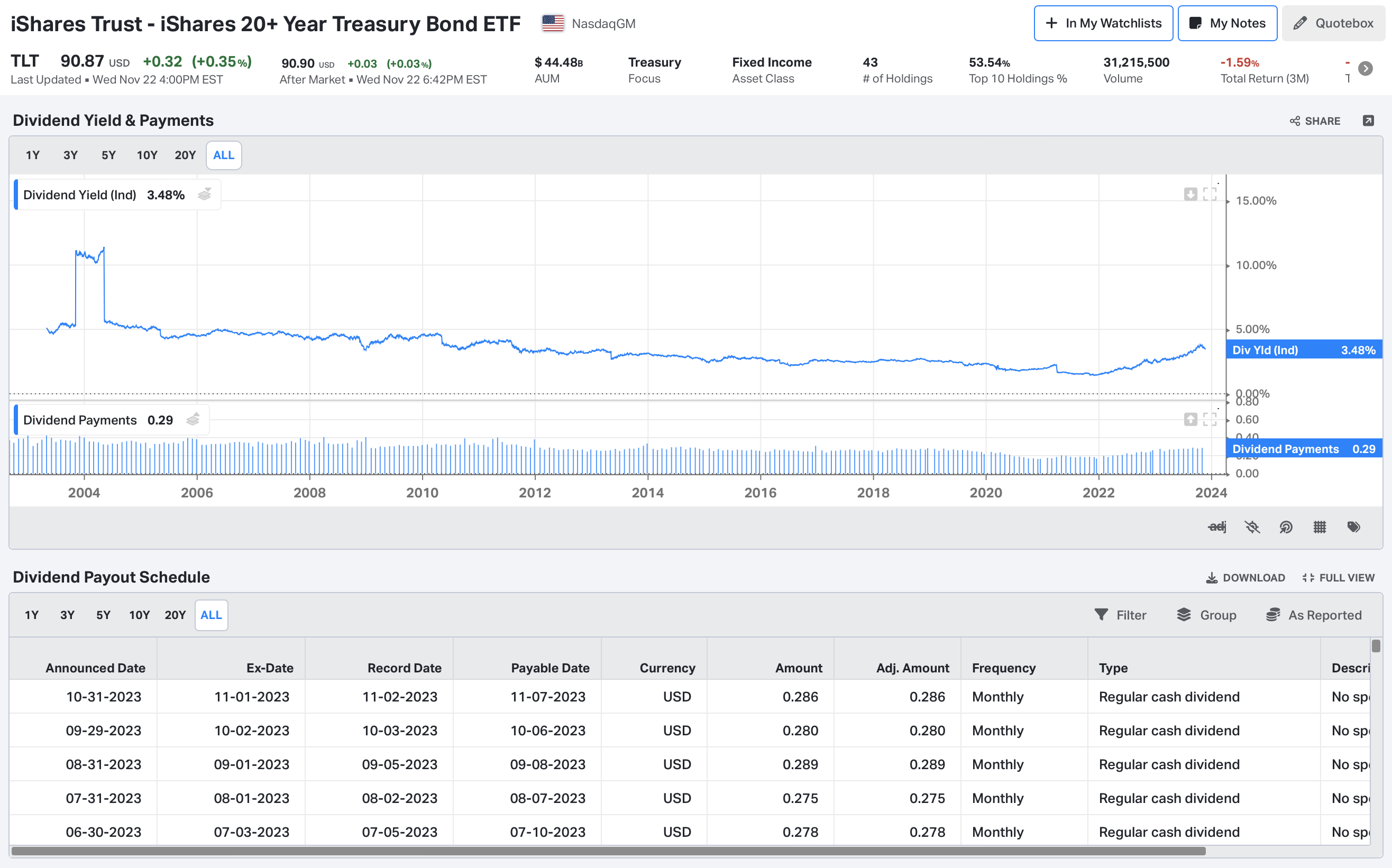7 Best Treasury ETFs
In the world of fixed-income, investors have a lot of choices. Treasurys, bonds issued by the US Government, are perceived to be one of the safest fixed-income investments on the market, due to the fact they are backed by the full faith and credit of the US Treasury Department. Every country has their own version of a government bond. In the United Kingdom, they are called Gilts. In Germany, they are called Bunds. In the United States, they are referred to as Treasurys, which is where our focus will be today. Treasurys have been in demand in 2023 as interest rates have been on the rise. Gain deeper insights by checking our Global Yields dashboard below.
Thankfully, investors don’t need to deal with the complexities and liquidity requirements of purchasing individual Treasurys. There are a number of low-cost Treasury ETFs available today that provide investors with a variety of exposure across with varying yields and degrees of maturity concentration.
PRO TIP:
To find the best Treasury ETFs, you can use the same approach we applied:
-
- US-based: We chose US ETFs for this list.
- Non-levered: We exclude all leveraged ETFs.
- Passive: We exclude active funds from our selection.
- Large AUM: All of our selections have a base of AUM that exceeds $1.5 billion.
- Low Expense: All of our selections have expense ratios below 0.16%.
- Widely Available: There are many funds out there offering exposure to the treasury market. We focused on funds that are widely available and are not restricted to certain brokerages, advisors, or pension schemes.
How Koyfin Helps: Screener
Koyfin ETF screening tool allows scanning through more than 100K global securities using 5,900+ filter criteria. Simply add the ‘Treasury’ as a focus and apply our Pro Tip criteria or your own filters to tailor your search.
The 7 Best Treasury ETFs of 2023
Name | Ticker | AUM | Yield | Expense Ratio |
|---|---|---|---|---|
Schwab Short-Term U.S. Treasury ETF | SCHO | $12.02B | 3.51% | 0.03% |
Vanguard Long-Term Treasury ETF | VGLT | $8.62B | 3.50% | 0.04% |
Invesco Short Term Treasury ETF | TBLL | $1.54B | 4.54% | 0.08% |
SPDR Bloomberg 1-3 Month T-Bill ETF | BIL | $36.82B | 4.57% | 0.14% |
iShares 3-7 Year Treasury Bond ETF | IEI | $12.78B | 2.25% | 0.15% |
iShares 10-20 Year Treasury Bond ETF | TLH | $7.52B | 4.06% | 0.15% |
iShares 20+ Year Treasury Bond ETF | TLT | $44.48B | 3.48% | 0.15% |
*Data as of November 23rd, 2023
Investing in Treasury ETFs requires more than just initial selection; consistent monitoring is essential. Use a watchlist to stay updated on market trends and ETF performance, which can greatly influence their returns. Regular tracking also helps you respond promptly to changes, maintaining alignment with your investment objectives.
Track ETF Metrics in Koyfin Watchlists
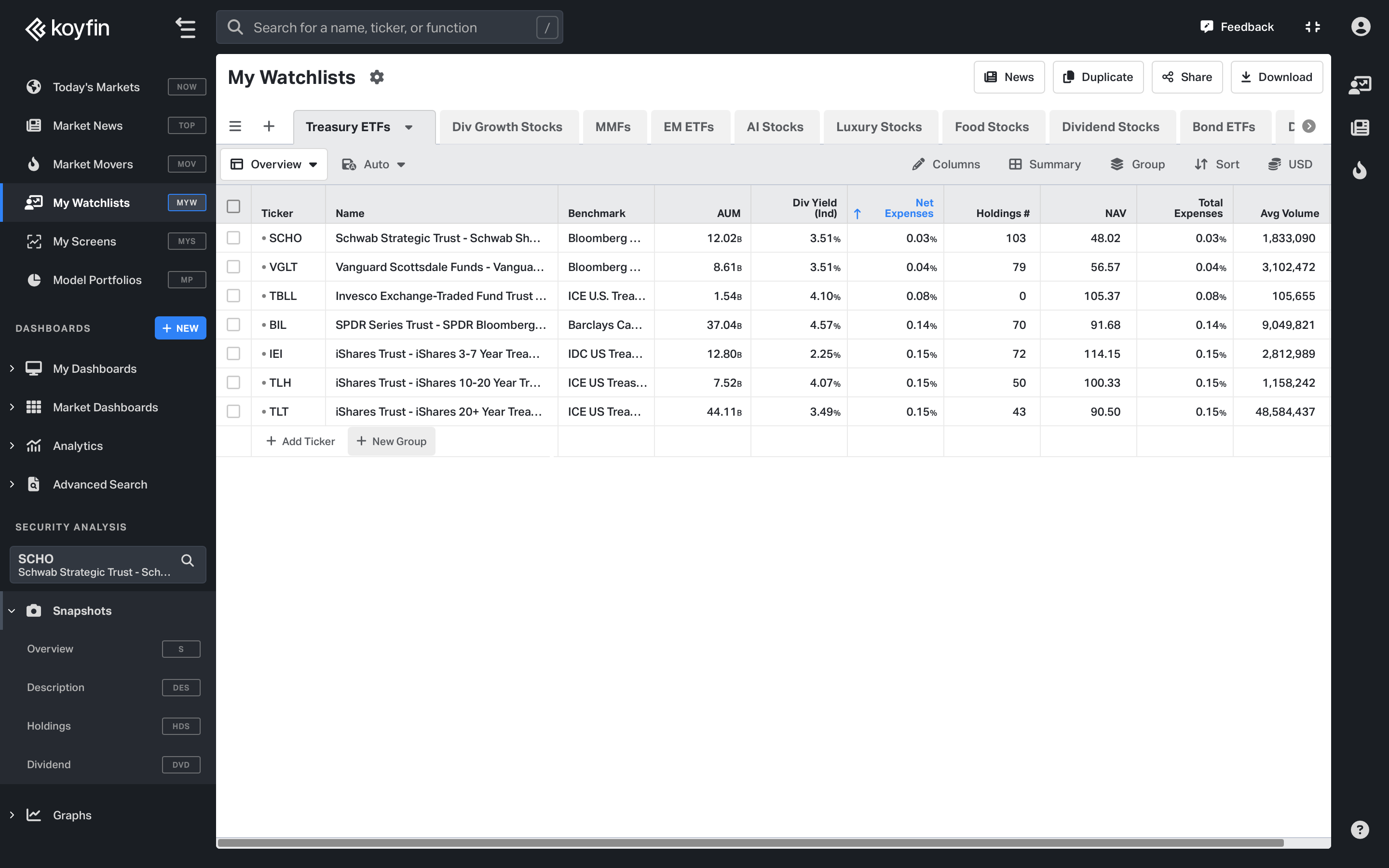
Schwab Short-Term U.S. Treasury ETF (SCHO)
The Schwab Short-Term Treasury ETF, SCHO, provides exposure to government bonds with maturities ranging between one to three years and tracks the Bloomberg US Treasury 1-3 Year Index. SCHO is the lowest cost fund on our list, with a 0.03% expense ratio and a 3.51% monthly distribution yield. Because SCHO offers exposure to shorter term bills, it has a lower duration (1.9 years) than most of the funds on our list, delivering a lower level of sensitivity to interest rates, while benefiting from the recent rise in interest rates.
The fund currently holds 103 issues and has $12.02 billion in managed assets with a weighted average maturity of 2 years.
Key Investment Insights for Schwab Short-Term U.S. Treasury ETF (SCHO):
Benchmark:
Bloomberg US Treasury 1-3 Year Index
AUM:
$12.02 billion
Distribution Yield:
3.51%
Expense Ratio:
0.03%
Vanguard Long-Term Treasury ETF (VGLT)
The Vanguard Long-Term Treasury ETF, VGLT, provides exposure to government bonds with maturities ranging between 10 and 25 years and tracks the Bloomberg U.S. Long Treasury Index. VGLT has an expense ratio of 0.04% and a monthly distribution yield of 3.50%. Because VGLT offers exposure to longer term government bonds, it has a higher duration (14.7 years) than a fund like SCHO, meaning it is considerably more sensitive to interest rate changes.
The fund currently invests in 79 issues, and has $8.62 billion in AUM with an average maturity of 22.7 years.
Key Investment Insights for Vanguard Long-Term Treasury ETF (VGLT):
Benchmark:
Bloomberg U.S. Long Treasury Index
AUM:
$8.62 billion
Distribution Yield:
3.50%
Expense Ratio:
0.04%
Invesco Short Term Treasury ETF (TBLL)
Invesco’s Short Term Treasury ETF, TBLL, is another fund which provides exposure to short term government bonds. TBLL’s range is narrower than a fund like SCHO, however, as they invest exclusively in Treasurys with maturities below 1 year. This means TBLL will have a shorter duration than SCHO, benefitting more timely from the rise in interest rates as new bonds cycle through the fund faster.
The fund is the smallest on our list, at $1.54 billion in AUM, with a 0.08% expense ratio and a monthly distribution yield of 4.54%.
Key Investment Insights for Invesco Short Term Treasury ETF (TBLL):
Benchmark:
ICE U.S. Treasury Short Bond Index
AUM:
$1.54 billion
Distribution Yield:
4.54%
Expense Ratio:
0.08%
SPDR Bloomberg 1-3 Month T-Bill ETF (BIL)
SPDR’s 1-3 month treasury bill ETF is the shortest duration fund on our list, providing exposure to government bonds with maturities ranging between one and three months, tracking the Barclays Capital U.S. 1-3 Month Treasury Bill Index. This means that BIL will experience less exposure to fluctuations in interest rates than longer duration funds. The average maturity of the fund is just 1.2 months.
Charging an expense ratio of 0.14%, investors in BIL currently received a monthly distribution yield of 4.57%; the highest on our list.
Key Investment Insights for SPDR Bloomberg 1-3 Month T-Bill ETF (BIL):
Benchmark:
Barclays Capital U.S. 1-3 Month Treasury Bill Index
AUM:
$36.82 billion
Distribution Yield:
4.57%
Expense Ratio:
0.14%
iShares 3-7 Year Treasury Bond ETF (IEI)
The iShares 3-7 Year Treasury ETF, IEI, provides exposure to government bonds with maturities ranging between 3 and 7 years and tracks the IDC US Treasury 3-7 Year Index. Investing across more than 70 issues, IEI has an expense ratio of 0.15% and $12.78 billion in AUM. The current monthly distribution yield stands at 2.25% and the weighted average duration and maturity stand at 4.3 years and 4.7 years respectively.
Key Investment Insights for iShares 3-7 Year Treasury Bond ETF (IEI):
Benchmark:
IDC US Treasury 3-7 Year Index
AUM:
$12.78 billion
Distribution Yield:
2.25%
Expense Ratio:
0.15%
iShares 10-20 Year Treasury Bond ETF (TLH)
The iShares 10-20 Year Treasury Bond, TLH, offers investors exposure to longer-term government bonds than a fund like IEI, with maturities in the fund ranging between 10 to 20 years. Tracking the ICE US Treasury 10-20 Year Bond Index, TLH has a weighted average duration and maturity stand at 12.9 years and 17.1 years respectively.
The fund currently has $7.52 billion in AUM, offers a monthly distribution yield of 4.06%, and costs investors 0.15%.
Key Investment Insights for iShares 10-20 Year Treasury Bond ETF (TLH):
Benchmark:
ICE US Treasury 10-20 Year Bond Index
AUM:
$7.52 billion
Distribution Yield:
4.06%
Expense Ratio:
0.15%
iShares 20+ Year Treasury Bond ETF (TLT)
The iShares 20+ Year Treasury Bond, TLT, offers investors exposure to even longer-term government bonds than a fund like TLH, investing in Treasurys only with maturities above 20 years. Tracking the ICE US Treasury 20+ Year Bond Index, TLT has a weighted average duration and maturity stand at 16.5 years and 25.3 years respectively.
The fund currently has $44.48 billion in AUM, offers a monthly distribution yield of 3.48%, and costs investors 0.15%.
Key Investment Insights for iShares 20+ Year Treasury Bond ETF (TLT):
Benchmark:
ICE US Treasury 20+ Year Index (USD)
AUM:
$44.48 billion
Distribution Yield:
3.48%
Expense Ratio:
0.15%
How To Find Top Treasury ETFs
Step 1: Sign Up to Koyfin for Free. Register an account and get started; no credit card required.
Step 2: Create a Screener. Head to ‘My Screens’, create a new ETF screener and give it a name.
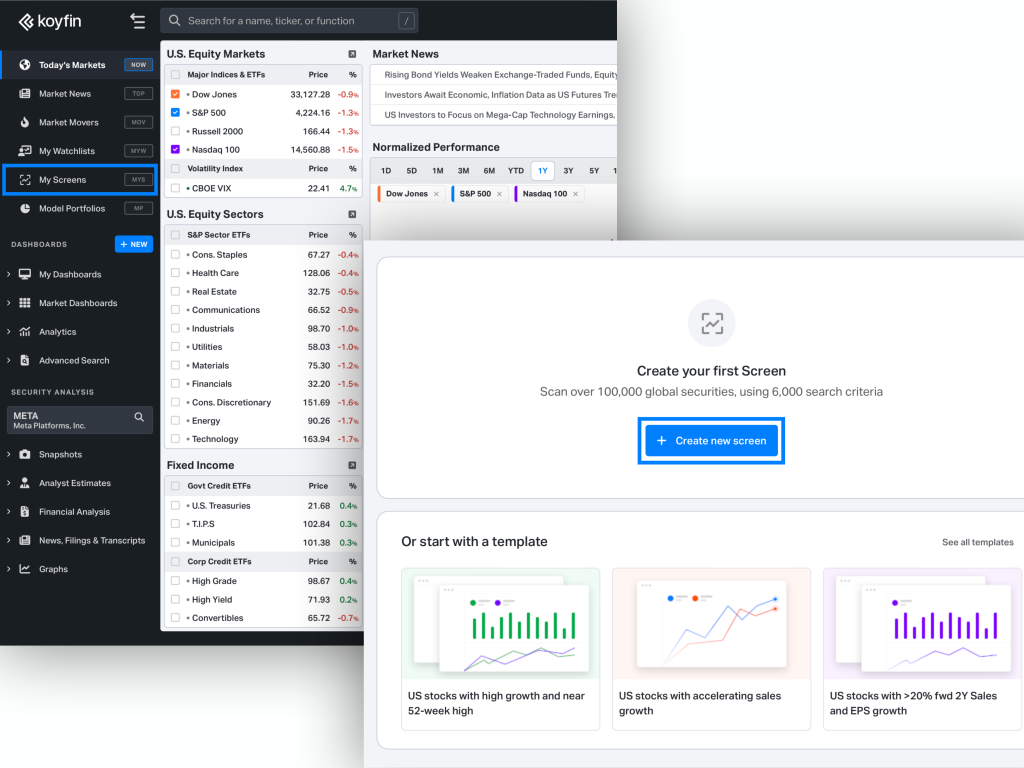
Step 3: Define your Investment Universe. Select the United States as a trading country. Add new universe criteria and select the following options:
- Asset Class: Fixed Income
- ETF Category: US Government
- Is Active: No
- Is Levered: No
- Focus: Treasury
Or choose your own criteria.
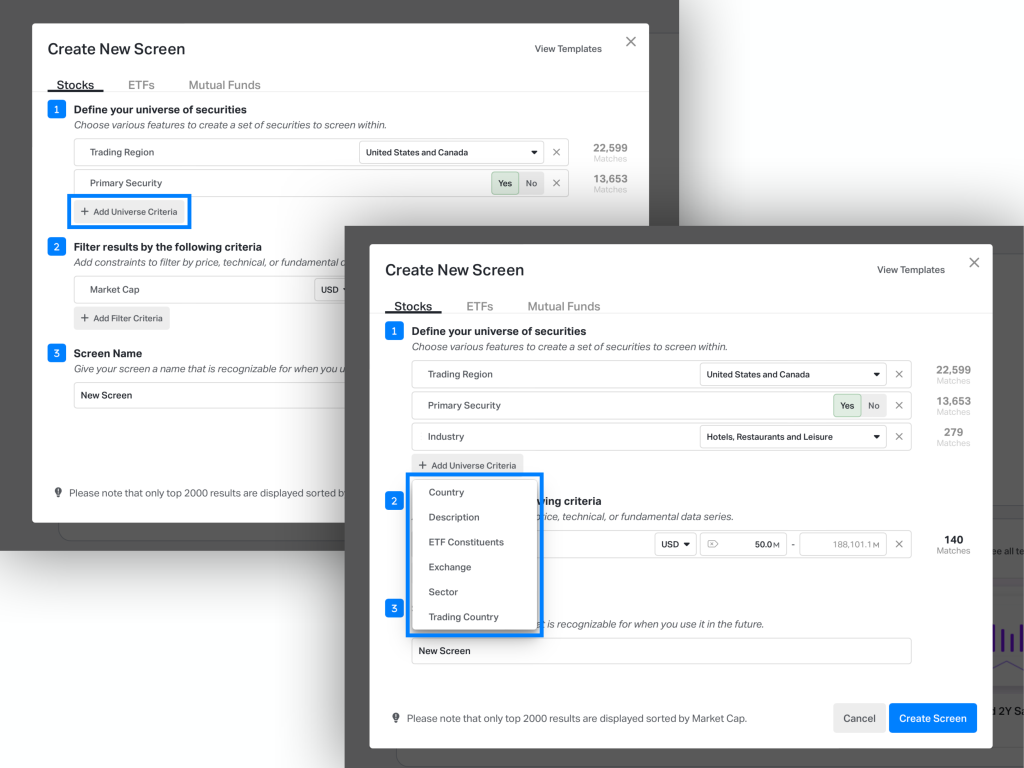
Step 4: Add Filter Criteria. We have thousands of data points you can add to a screener. For an ETF screen, you can specify specific AUM ranges, expense ratios, flows, custodians, and more. If you want to simply see all the ETFs available, leave the filter criteria blank.
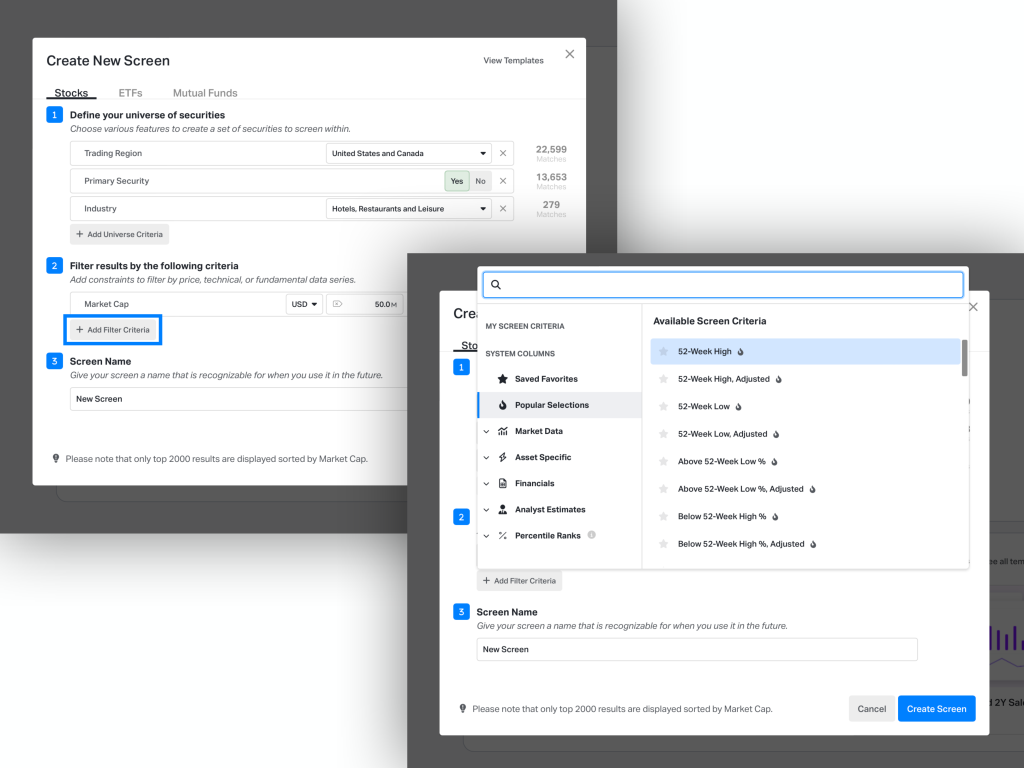
Step 5: Create Screen. When you are happy with your screener, hit save and apply. You can also save this screener output as a watchlist too, and add columns like expense ratio, aum, and more ETF-specific items.
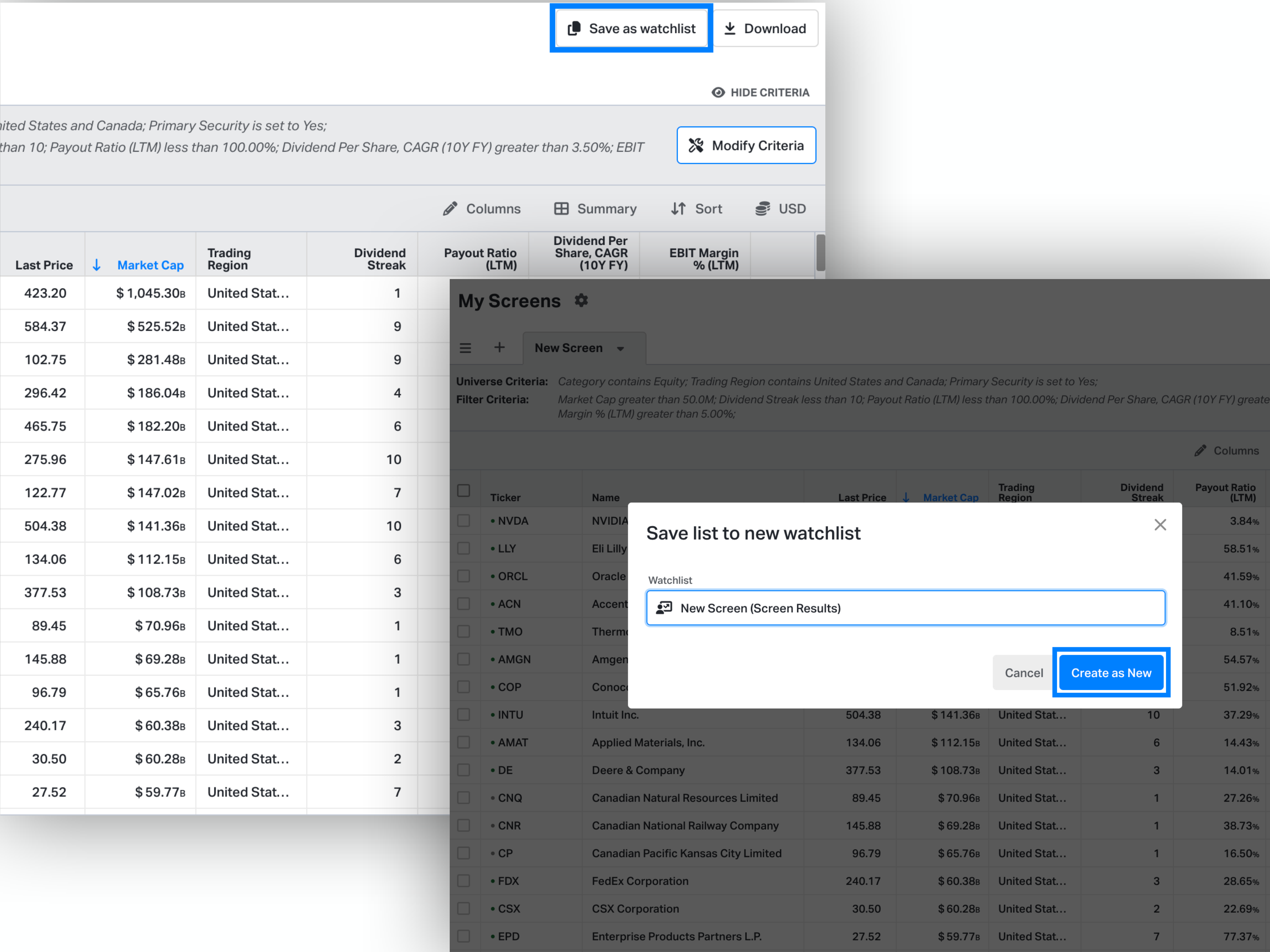
How to Create a Watchlist for Treasury ETFs
Step 1: Sign Up to Koyfin for Free. Register an account and get started; no credit card required.
Step 2: Create a Watchlist. Head to ‘My Watchlists’, create a new watchlist and give it a name.
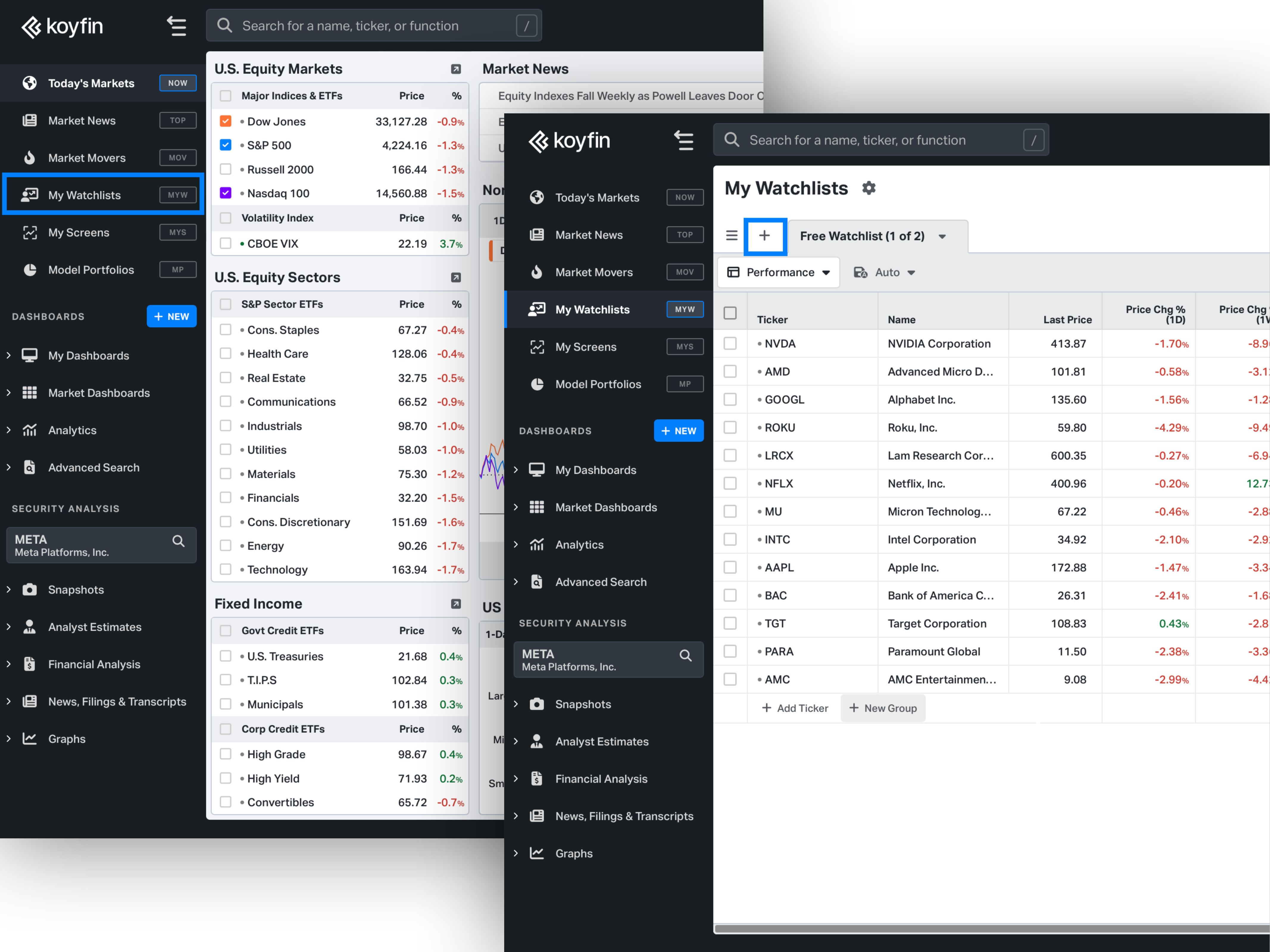
Step 3: Add Tickers. Click ‘Add Ticker’, then ‘Import Securities’, then copy and paste the below list of tickers.
SCHO, TBLL, BIL, IEI, TLH, TLT, VGLT

Step 4: Customize Columns. Hit the ‘Columns’ icon to add and remove columns from your watchlist table.
We have thousands of data points you can add to a watchlist, including fundamental data, price and returns data, analyst estimates, percentile ranks, security information, portfolio tools, and the ability to create your own formulas and labels.
Now your watchlist is ready, and you can use the rest of the Koyfin terminal to track and analyze these ETFs.

FAQ
-
What are Treasury ETFs?
Treasury ETFs are exchange-traded funds that invest predominantly in U.S. Treasury bonds and securities. Essentially, they offer a way to invest in government-backed debt through a vehicle that trades on the stock market.
-
Why invest in Treasury ETFs?
Investing in Treasury ETFs offers several advantages: they typically carry lower risk compared to stocks, provide steady interest income, and contribute to the diversification of an investment portfolio, mitigating overall risk.
-
How do Treasury ETFs differ from individual Treasury bonds?
Treasury ETFs differ from individual Treasury bonds in several ways. They offer greater liquidity, allowing for buying and selling on the stock market similar to stocks. They also provide diversification, as each ETF holds a range of bonds. Furthermore, ETFs are managed by professionals and generally have lower investment minimums compared to purchasing individual bonds.
-
What are the tax implications of investing in Treasury ETFs?
The tax treatment of Treasury ETFs typically involves interest income being federally taxable but often exempt from state and local taxes. However, capital gains from selling the ETF at a profit are subject to capital gains taxes. Investors should consult with a tax professional for specifics.
-
How liquid are Treasury ETFs?
Treasury ETFs are known for their high liquidity, meaning they can be easily bought and sold during market hours. This liquidity offers flexibility for investors to adjust their portfolios or access funds promptly.
Editorial note
Our insights are derived solely from historical information and analyst predictions, employing an impartial approach. Please note that our articles do not serve as financial guidance.

